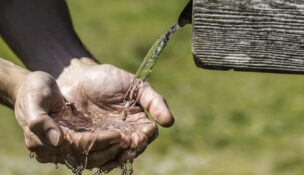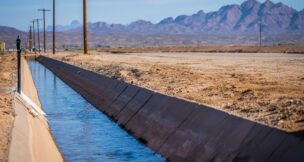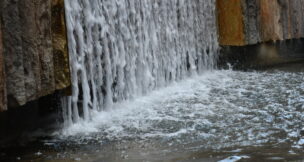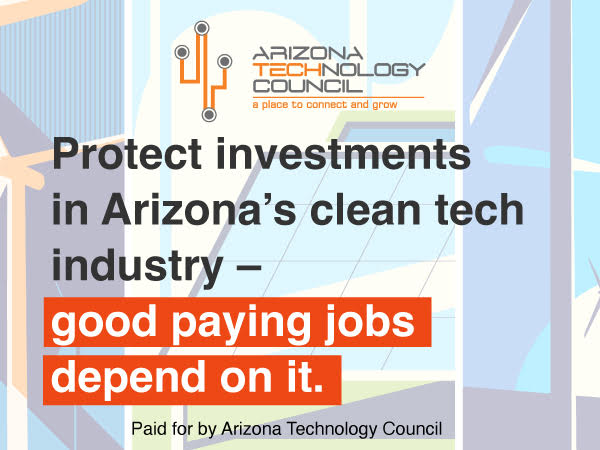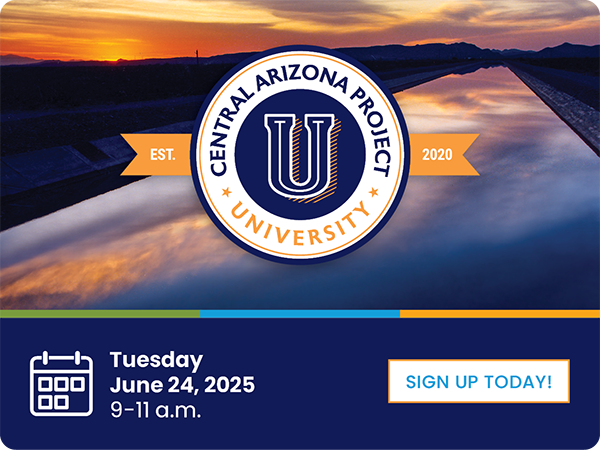Arizona’s water authority considers 6 proposals for long-term solutions
Jakob Thorington Arizona Capitol Times//October 11, 2025//
Arizona’s water authority considers 6 proposals for long-term solutions
Jakob Thorington Arizona Capitol Times//October 11, 2025//
Key Points:
-
The Water Infrastructure Finance Authority of Arizona is evaluating six water importation proposals
-
Proposals aim to bring in hundreds of billions of gallons of water annually
-
WIFA requests renewal of $25 million in annual grants to maintain progress
A state agency dedicated to finding long-term water solutions in Arizona is nearing a decision on six water importation proposals that could bring hundreds of billions of gallons of water annually to the state.
The Water Infrastructure Finance Authority of Arizona is currently soliciting six long-term water proposals from three water partners. The projects include developing new and renewable water supplies in the state from wastewater reclamation, surface water, ocean water and other water sources, according to WIFA.
Ben Alteneder, the agency’s assistant director of external affairs, said WIFA will decide by the end of the year whether any of these six projects should move forward into a “due diligence” phase. He said that under this phase, those projects would be open to public inspection and initiate a robust stakeholder process, allowing the agency to evaluate the feasibility of each proposal.
Alteneder said making the proposals public is crucial heading into the 2026 legislative session after the agency has seen more than 60% of its funding for long-term water augmentation cut in the past three years.
In 2022, WIFA’s long-term water augmentation fund was allocated $1 billion; however, budget constraints in recent legislative sessions have forced lawmakers to sweep funds from the agency, and the fund now stands at $376 million.
Lawmakers swept another $84 million from the long-term water augmentation fund in the 2025 budget, marking the third consecutive year that WIFA funds were swept to fill budget gaps.
“It really is going to be important for the Legislature to signal to the public and to potential projects that we’re serious,” Alteneder said. “I think a lot of (lawmakers) understand the implications, but frankly, if you don’t have a tangible project in front of you, a lot of times it’s just too far out into the future for folks to be serious about.”
These proposals would still be years away if they move forward with WIFA, but it would allow state leaders to see how much funding from outside sources may be necessary to eventually complete the project and finally give lawmakers a more tangible goal to move toward.
“The receipt of these offers proves that there is capacity and capability to develop new, renewable water supplies for Arizona and that WIFA’s process for ensuring that we approach any investment in generational water infrastructure with a sound, methodical approach is working,” WIFA’s long-term water augmentation fund Committee Chairman Ted Cooke said in an Aug. 20 news release about the water importation projects.
For the state’s upcoming budget, leaders at WIFA have asked lawmakers to leave the long-term water augmentation fund alone. The agency’s budget request, submitted in September, notes that it is not asking for additional dollars in the fund, but for certainty that no further budget cuts will be made.
“Unfortunately, WIFA’s serious approach to executing its water augmentation mission is not matched by serious commitments from appropriators,” WIFA’s budget request states. “WIFA is not requesting the repatriation of these funds at this time, but we cannot state strongly enough how imperative it is that no further cuts be made.”
During the 2025 legislative session, lawmakers passed a resolution calling for the full reinstatement of WIFA’s long-term water augmentation dollars; however, this reinstatement was not included in the budget passed months later.
“In 2022, the Water Infrastructure Finance Authority was expanded with a $1 billion commitment to secure and invest in new long-term water supplies for Arizona,” Rep. Gail Griffin, R-Hereford, said in a January news release of the resolution, House Concurrent Resolution 2016. “While recent budget shortfalls have impacted the program’s funding, this resolution underscores the Legislature’s commitment to fully reinstate WIFA funds when budget conditions improve, sending a clear message that water security is a top legislative priority.”
HCR2016 passed in a bipartisan vote in both chambers, but some Republicans and Democrats would not commit to restoring the agency’s funds.
Rep. Alexander Kolodin, R-Scottsdale, called the agency’s long-term water augmentation fund a “slush fund” during the House’s February vote on the resolution. He also said the fund hasn’t yet funded any projects and questioned why the state is sitting on hundreds of millions of dollars.
“Why fund it if we can’t use it for the advertised purpose? Why keep $400 million just lying around for no reason?” Kolodin said on the House floor.
By December, Alteneder said he hopes lawmakers will see the reason as the project details for each proposal become public.
WIFA is also requesting $25 million in annual funding for water conservation grants to be renewed, which have funded more than 200 projects across Arizona so far and are expected to save the state 6.5 million acre feet of water.












